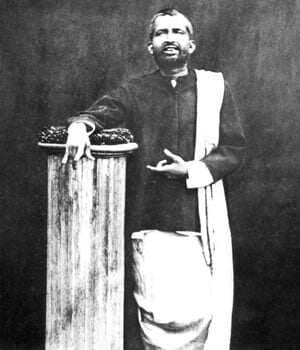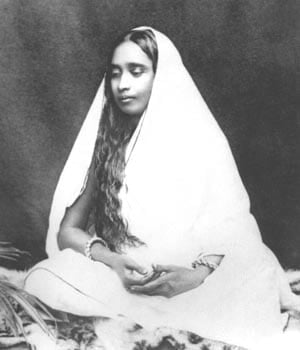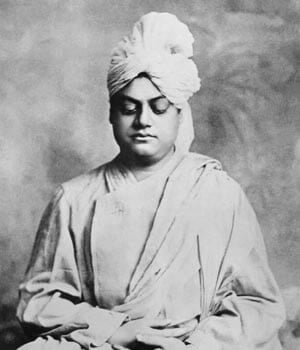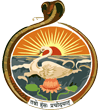
Inspiration

Sri Ramakrishna
Sri Ramakrishna (1836 – 1886) well known as the ‘Paramahamsa,’ is the brightest star that rose on the spiritual firmament of India of the nineteenth century. Born of pious parents in the little village of Kamarpukur in the remote part of the Bengal (b. 18th February 1836) he spent his early life there. Ever since he shifted to Calcutta in 1852 to assist his elder brother, until his Mahasamadhi on the 16th August 1886, it was a long life of total dedication to god. Starting his life as an unknown temple priest, he rose to be a world teacher of religion and spirituality, by dint of intense sadhanas culminating in a uniquely comprehensive spiritual experience. From simple image worship right up to the highest flights of Advaita philosophy, he traversed the whole gamut of Indian spiritual life. Not being satisfied with it, he experimented with alien religions like Christianity and Islam and found, to his amazement, that they too lead to the same super conscious mystic state. Being thus armed with the direct experience of truth through the known paths of various cults and religions, he proclaimed the great message of his life: The essential unity of all religions and the consequent need for harmony among the votaries of various religions. He specially prepared a band of disciples under the leadership of Narendranath (Swami Vivekananda) to give a practical shape to his teachings and spread them far and wide for the benefit of humanity. The Ramakrishna Math and Ramakrishna Mission are the direct offshoots of this. Through Sri Sarada Devi, his divine consort, he has exhibited to the world the possibility of raising conjugal life to the highest spiritual level and the nature of universal motherhood.

Sri Sarada Devi
Sri Sarada Devi (1853-1920): If the motherly love inhabiting the hearts of all the mothers in the world were to be put together and churned, the nectar that would issue forth would perhaps approximate to Sri Sarada Devi. Sri Ramakrishna left her in this world to uphold the ideal of universal motherhood. Born of humble and pious parents at the village of Jayarambati in Bengal on the 22nd December 1853, Sri Sarada Devi grew up practically like any other village girl of those days with little schooling but plenty of work at home and in the fields. Though united with Sri Ramakrishna in wedlock at the age of hardly six, she lived with her parents most of the time in the early years. It was only in the first part of 1872 when she was about eighteen, that she arrived at Dakshineswar and started living with her saintly husband. It was during this year that Sri Ramakrishna worshipped her as “Shodasi”, an aspect of the Divine Mother. With no trace of cupidity in heart and yet overflowing with the most tender love and concern for each other, the couple has left to the whole world, the supreme example of conjugal life. The next fourteen years of her life until the demise of Sri Ramakrishna in 1886 were a veritable saga of self-effacing service to her husband and his disciples. It was also a period of intensive training for her by her godly husband, who could well foresee her future role as a spiritual teacher in her own right. The next phase of her life from 1886 to 1909, when a permanent abode (the Udbodhan House) was built for her at Calcutta, was rather chequered. She spent much of this time in pilgrimages and spiritual ministry. The last eleven years until her Mahasamadhi on the 21st July 1920 were more hectic. Apart from spiritual ministration to the earnest seekers, she had also to guide the activities of the Ramakrishna organizations. Her rare insight into the problems of Indian women who were handicapped by obsolescent social customs on the one side, and exposure to the modern western culture on the other, made her recognize the need for their education and even economic independence. That is why she was an ardent supporter of Sister Nivedita’s endeavours in the field of education of Indian women. Her last message, `If you want peace of mind, do not find fault with others; rather find out your own fault and rectify them. No one is a stranger in this world. The whole world belongs to you!’ is a typical reflection of her own immaculate life.

Swami Vivekananda
Swami Vivekananda (1863 – 1902) is just another name for the phenomenon that exploded on the Indian scene towards the end of the nineteenth century and restored the self-confidence and self-respect of a Nation that had been badly mauled for millennia. Born on the 12th January 1863, of an intellectual but compassionate father and a deeply religious mother, Narendranath that was his original name – got a good education and cultural training under them. An innate desire for spiritual perfection brought him into contact with Sri Ramakrishna in the early part of 1882. The next four and half years — until the Mahasamadhi of Sri Ramakrishna — were marked by turbulence and turmoil, the direct result of the perfect master chiseling and shaping the perfect disciple, bur ending in the total submission of the latter at the feet of the former. As per the specific direction of his guru, Narendra along with the other young men who were his co-disciples took the monastic orders and founded a monastery in his guru’s name at Baranagore (Kolkata) in 1886. Setting out on pilgrimage, mostly as a wandering monk, he finally arrived at Kanyakumari, the southernmost tip of the Indian soil, sometime during 1892. There while meditating on the rock inside the sea, the mission of his life was revealed to him. Then, things moved quickly. Setting sail for America on the 31st May 1893 he created history at the World Parliament of Religions held at Chicago during September of the same year. After whirlwind tours in America and England, he triumphantly returned to India via Colombo on the 15th January 1897. During the next five years, he literally shook the Indian Nation to its foundations, electrifying it to dynamic self-expression, through his speeches and writings as also conversations. These have been compiled and published in eight volumes (now nine volumes), well known as the Complete Works of Swami Vivekananda. They contain, as he himself once remarked, enough messages for millennia. He formally established the Ramakrishna Mission in 1897 and consecrated the newly built Belur Math, the Headquarters of the Ramakrishna Monastery, in 1899. He visited the West again during 1899-1900. He shuffled off the mortal coil on the 4th of July 1902. This was a multifaceted personality – a prophet, a patriot, a monk, a yogi, a social reformer, an educationist, an artist, a poet and a humanist — all rolled into one. His dynamic life and message gave a new direction to resurgent India. His work is being continued even today by the Ramakrishna Math and the Ramakrishna Mission, the twin organizations that he established with the motto: Atmano Mokshartham Jagaddhitaya cha, `For the sake of self-realization and the good of mankind.’ The Math is unique in that it has charted new avenues in Indian monasticism. The mission is an ideal service organization embodying the teachings of practical Vedanta.

